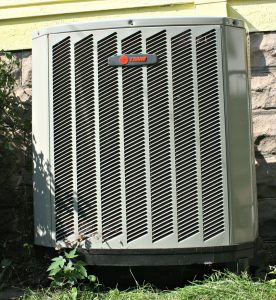What is weatherization?
Weatherization is the process of protecting your home and family from the elements. Weatherization takes place both inside and outside the home, and can also include projects in your yard. The goal of any weatherization project is to reduce convective heat transfer: the unwanted transfer of heat from one part of the home to another.
If you’ve ever caught a chill from being in a drafty room in the winter, you’ve experienced an unwanted convective heat transfer. The heat in the room is “escaping” and the air temperature is decreasing. In this case, you could put on a sweater. But a better decision is to address the room’s heat transfer with a weatherization project.
What does weatherization do?
An effective weatherization project will prevent convective heat transfer. The result should be a room with a stable and predictable air temperature. You and your family will notice the improvement right away, when your rooms are more comfortable in heating season and all year ’round.
According to the U.S. Department of Energy,
The benefits of weatherization begin with reducing the energy bills of recipients for a long period of time. Some measures, such as insulating walls or roofs, for example, can provide savings for the lifetime of a house—30 years or more. Other measures, such as making heating or cooling equipment more efficient, will provide savings for 10–15 years. On average, the value of the weatherization improvements is 2.2 times greater than the cost.
That’s a healthy savings for anyone!
Do it yourself weatherization projects
There are several weatherization projects that anyone can complete with a few basic tools and the right materials.
-
- Weatherstripping
is the process of sealing the gaps in window and door frames that can contribute to heat loss. Effective weatherstripping could save 10 to 15 percent on home heating energy bills, according to home improvement experts at This Old House. There are several types of weatherstripping available
, so ask the pros at your local hardware or home improvement store for advice on what’s best for your home.
- Weatherstripping
-
- Air sealing with caulk is another effective DIY weatherization project. Caulk is a flexible sealant applied over joints and gaps in your home: between your shower and the floor, for example, or between the window frame and the window. When you seal these spaces you keep air from leaking outside your home, and your HVAC system doesn’t have to work as hard to keep your rooms at a comfortable temperature. All you need to get started is a caulk gun and a tube of caulk
.
- Air sealing with caulk is another effective DIY weatherization project. Caulk is a flexible sealant applied over joints and gaps in your home: between your shower and the floor, for example, or between the window frame and the window. When you seal these spaces you keep air from leaking outside your home, and your HVAC system doesn’t have to work as hard to keep your rooms at a comfortable temperature. All you need to get started is a caulk gun and a tube of caulk
- Window sheeting and window insulation kits
are tried and true ways to air seal your windows and window frames in the winter. The idea is simple: use strong tape to secure a clear, heavy plastic sheet over an inside window frame. The combination of the plastic sheet and the tape will prevent air leakage and heat loss.
Weatherization rebate and assistance programs
-
- Department of Energy Weatherization Assistance Program: The U.S. Department of Energy (DOE) Weatherization Assistance Program provides grants to states, territories, and some Indian tribes to improve the energy efficiency of the homes of low-income families. These governments, in turn, contract with local governments and nonprofit agencies to provide weatherization services to those in need using the latest technologies for home energy upgrades.
-
- The National Association of State Energy Officials State and Territory Energy Offices map has state contact information for homeowners interested in finding weatherization resources and programs in their communities.
- Utility companies and co-ops often have rebates or low-interest loans available for homeowners who want to use home performance contractors for a weatherization project. Check the inserts in your billing statement, or the utility’s website, for information about available weatherization and home energy efficiency rebates and programs.
Additional weatherization resources
- The American Council for an Energy-Efficient Economy is a nonprofit organization that advocates for energy efficiency “to achieve greater economic prosperity, energy security, and environmental protection” for all Americans. Their residential energy resource portal includes information on home energy efficiency, weatherization, and the Consumer Guide to Home Energy Savings.



